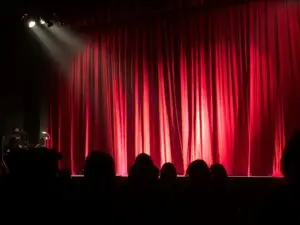Photography isn’t just about having the latest gear; it’s about knowing how to use what you have effectively. Whether you’re using a DSLR, mirrorless camera, or even a smartphone, these hacks will help you capture stunning shots without breaking the bank. Let’s dive into the top 10 camera hacks every beginner should know.

1. Use the Rule of Thirds
The rule of thirds is a foundational principle in photography. Imagine breaking your frame into nine equal parts using two vertical and two horizontal lines. Position your subject along these lines or at their intersections for balanced, compelling compositions.
Pro Tip: Most cameras and smartphones have a grid option—turn it on to help you frame your shots better.
2. Master Natural Lighting
Lighting can make or break a photo. Shooting during the “golden hour”—shortly after sunrise or before sunset—offers warm, soft light that’s perfect for portraits and landscapes.
Bonus Tip: If you’re shooting indoors, position your subject near a window and use sheer curtains to diffuse harsh sunlight.
3. DIY Lens Filters
Create unique effects with everyday items. For example, place tinted sunglasses over your lens for a creative color filter or stretch clear plastic wrap around the lens to add a dreamy haze.
How-To: Secure these items with tape or hold them steady while shooting to avoid scratching your lens.
4. Use Manual Focus for Creative Shots
While autofocus is convenient, manual focus allows you to emphasize specific details, such as a single flower in a field or raindrops on a window. Experimenting with focus can add depth and emotion to your images.
Pro Tip: Pair this technique with a wide aperture (low f-number) for a beautifully blurred background.
5. Leverage Leading Lines
Leading lines guide the viewer’s eyes through your photo. Look for natural or man-made lines like roads, fences, or rivers that lead to your subject.
Examples: Use railroad tracks for a vanishing point effect or sidewalks to direct attention to a subject.
6. Create a Tripod Substitute
Stabilizing your camera is crucial for sharp images, especially in low light. Don’t have a tripod? Use household items like books, a beanbag, or even lean your camera against a sturdy surface.
Quick Hack: A sock filled with rice can serve as a flexible camera stabilizer!
7. Play with Reflections
Reflections can add depth and symmetry to your photos. Look for reflective surfaces like mirrors, puddles, or even shiny cars to incorporate into your shots.
Creative Idea: Capture a city skyline reflected in a puddle or use a mirror to create abstract self-portraits.
8. Learn Exposure Triangle Basics
Understanding the relationship between ISO, shutter speed, and aperture is key to mastering manual mode.
Quick Guide:
- ISO: Controls light sensitivity. Use low ISO for bright environments and high ISO for low-light scenes.
- Shutter Speed: Determines how long the sensor is exposed to light. Use faster speeds for action shots and slower speeds for night photography.
- Aperture: Affects depth of field. A wide aperture (low f-number) blurs the background, while a narrow aperture (high f-number) keeps more of the scene in focus.
9. Add Depth with Foreground Elements
Include objects like branches, windows, or fences in the foreground to create a sense of depth and perspective. This technique draws the viewer’s eyes into the scene.
Pro Tip: Experiment with focus to blur the foreground slightly while keeping the subject sharp.
10. Experiment with Angles and Perspectives
Don’t just shoot from eye level! Explore low angles, high angles, or even unconventional perspectives like shooting through objects.
Examples:
- Lie on the ground for a worm’s-eye view of a subject.
- Shoot through foliage or a cracked door for a framed effect.
Conclusion
Mastering these simple hacks can elevate your photography game without requiring expensive equipment. The key is to practice, experiment, and have fun. Photography is as much about creativity as it is about technique—so get out there and start capturing the world through your lens!








